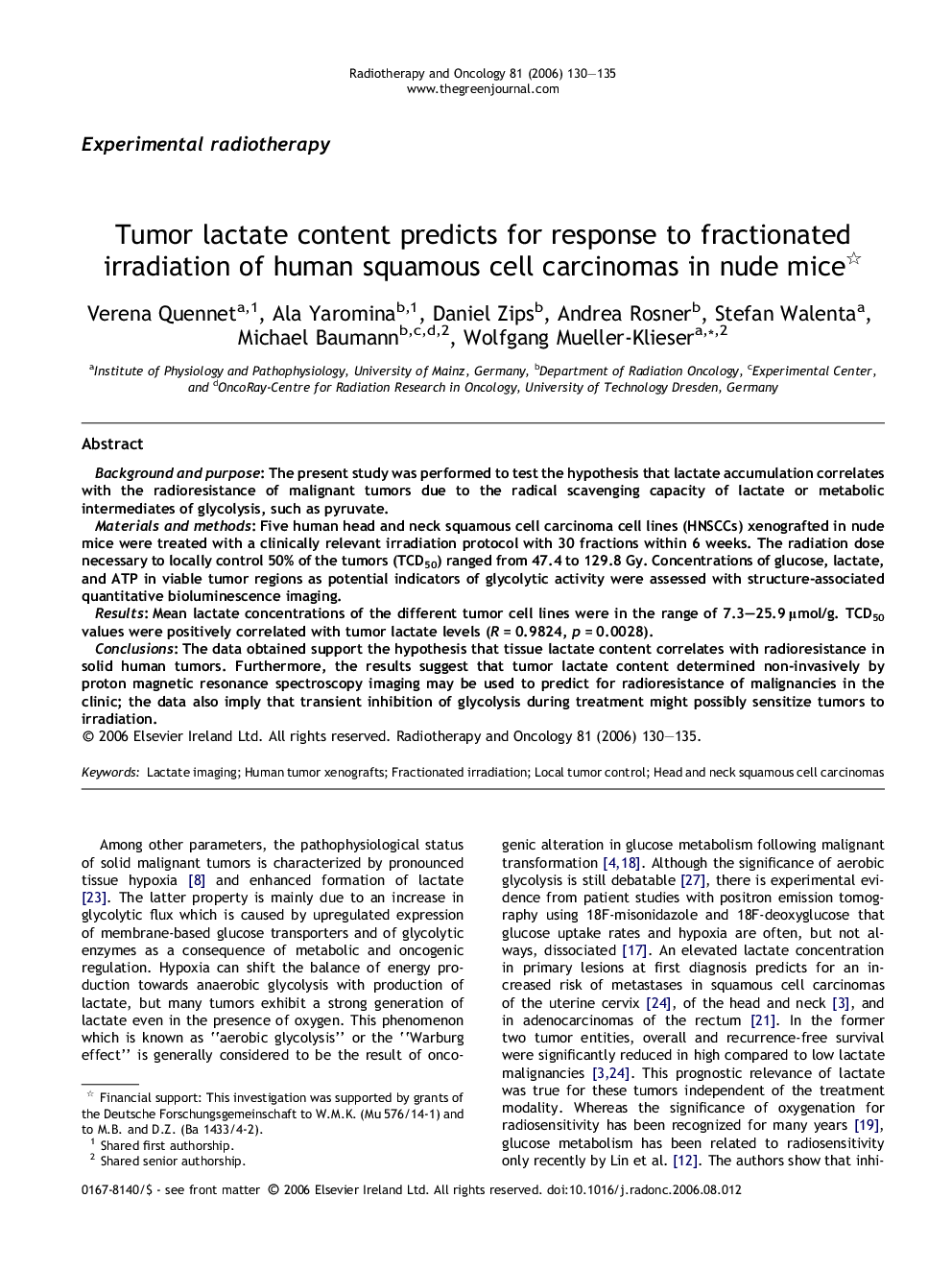| Article ID | Journal | Published Year | Pages | File Type |
|---|---|---|---|---|
| 2161178 | Radiotherapy and Oncology | 2006 | 6 Pages |
Background and purposeThe present study was performed to test the hypothesis that lactate accumulation correlates with the radioresistance of malignant tumors due to the radical scavenging capacity of lactate or metabolic intermediates of glycolysis, such as pyruvate.Materials and methodsFive human head and neck squamous cell carcinoma cell lines (HNSCCs) xenografted in nude mice were treated with a clinically relevant irradiation protocol with 30 fractions within 6 weeks. The radiation dose necessary to locally control 50% of the tumors (TCD50) ranged from 47.4 to 129.8 Gy. Concentrations of glucose, lactate, and ATP in viable tumor regions as potential indicators of glycolytic activity were assessed with structure-associated quantitative bioluminescence imaging.ResultsMean lactate concentrations of the different tumor cell lines were in the range of 7.3–25.9 μmol/g. TCD50 values were positively correlated with tumor lactate levels (R = 0.9824, p = 0.0028).ConclusionsThe data obtained support the hypothesis that tissue lactate content correlates with radioresistance in solid human tumors. Furthermore, the results suggest that tumor lactate content determined non-invasively by proton magnetic resonance spectroscopy imaging may be used to predict for radioresistance of malignancies in the clinic; the data also imply that transient inhibition of glycolysis during treatment might possibly sensitize tumors to irradiation.
